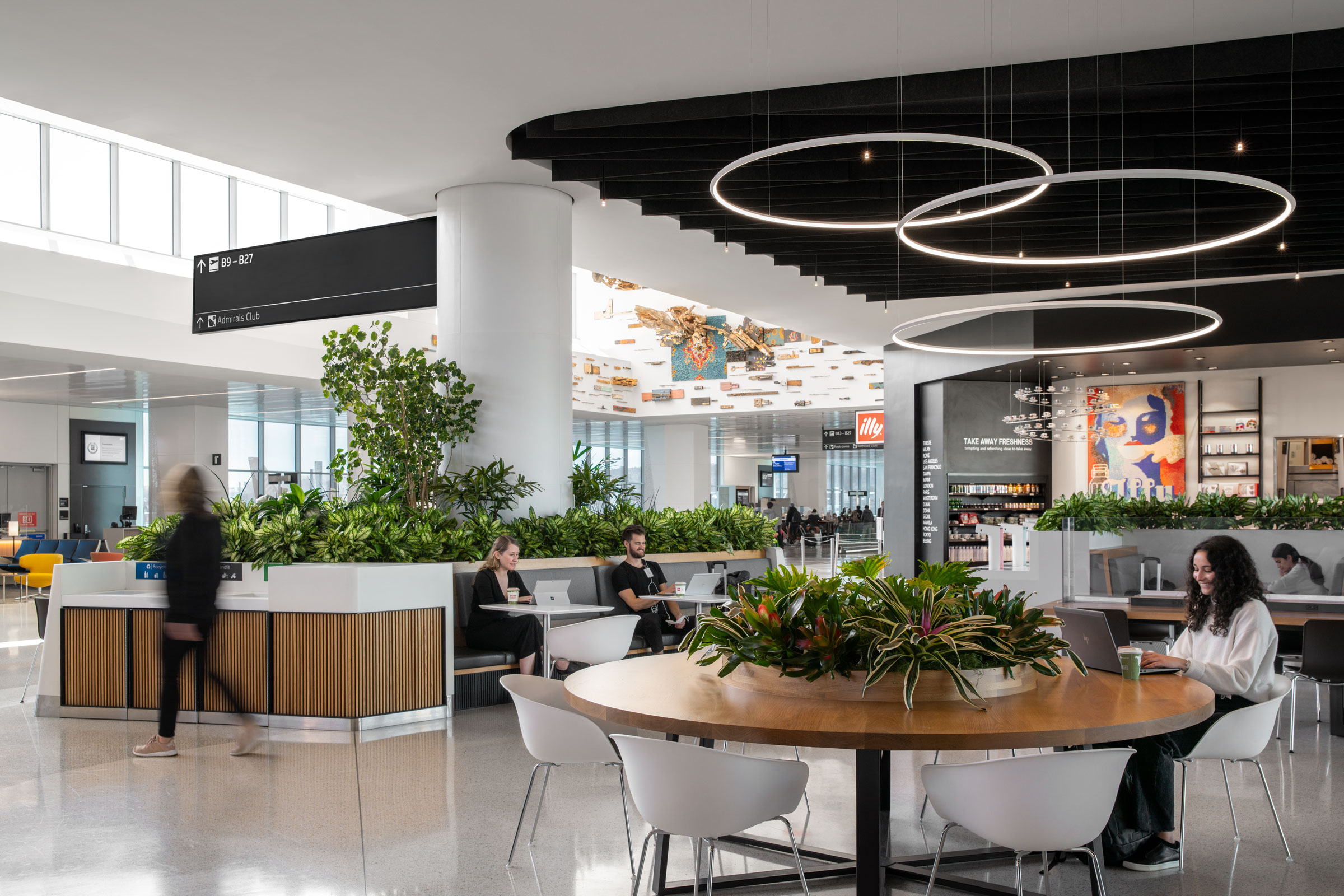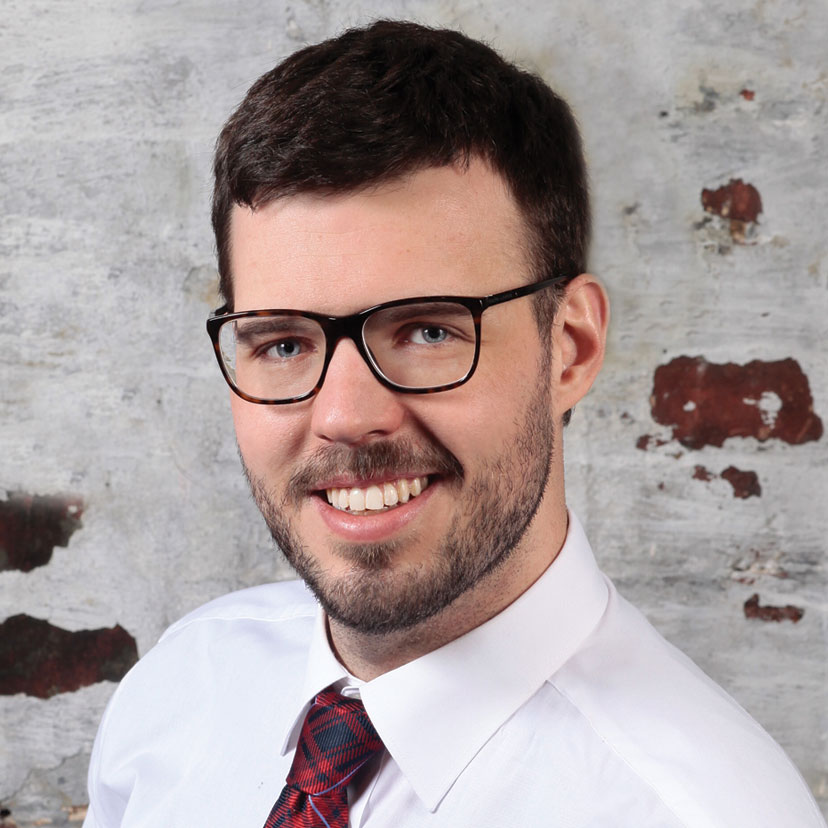Story at a glance:
- Architect Allison Smith’s design work earned San Francisco International Airport the first WELL certification for an airport terminal.
- Design features like improved ventilation, natural light, and sound pollution policies make the space more hospitable for thousands every day.
There are few places more claustrophobic than an airport terminal. It’s a paradox of modern life—the same space that can be your gateway to the world is oftentimes cramped, dull, uncomfortable, and stale.
That’s exactly the kind of space Allison Smith of HKS Architects wanted to avoid in her work on San Francisco International Airport (SFO) Harvey Milk Terminal 1.
The airport brought in HKS Architects to the project in 2015, knowing the firm had a commitment to earth-friendly—and people-friendly—designs. But when Smith became the company’s sustainability coordinator a year later, that focus became even clearer.
HKS asked Smith to expand the sustainability coordinator’s role within the firm. And no project better suited that goal than Terminal 1. “The design lent itself well to earning WELL certification,” she says.
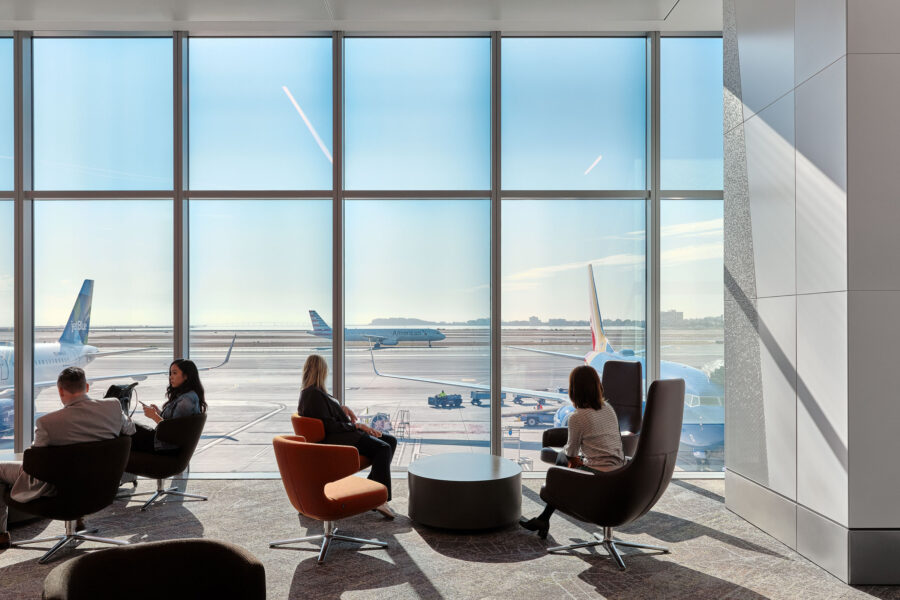
Natural light and comfortable seating dominate the waiting areas inside SFO Harvey Milk Terminal 1. Photo by Joe Fletcher
WELL certification wasn’t originally in the plans for the terminal. The certification was relatively new at the time—the International WELL Building Institute (IWBI) launched its points-based system in 2014—and was originally focused on office spaces. But its focus on creating spaces that improve human health through water, air, lighting, fitness, and comfort were a natural fit for the airport project.
Although the project was already designed and under construction when Smith came aboard, she says that wasn’t a big deal. “WELL digs beyond the design and construction,” she says.
Her first goal was to identify areas where the project would already qualify for WELL. For example: an art museum space was already planned as part of the terminal, which would earn points toward a certification. The terminal also featured the first gender neutral restroom. That also earned the project points.
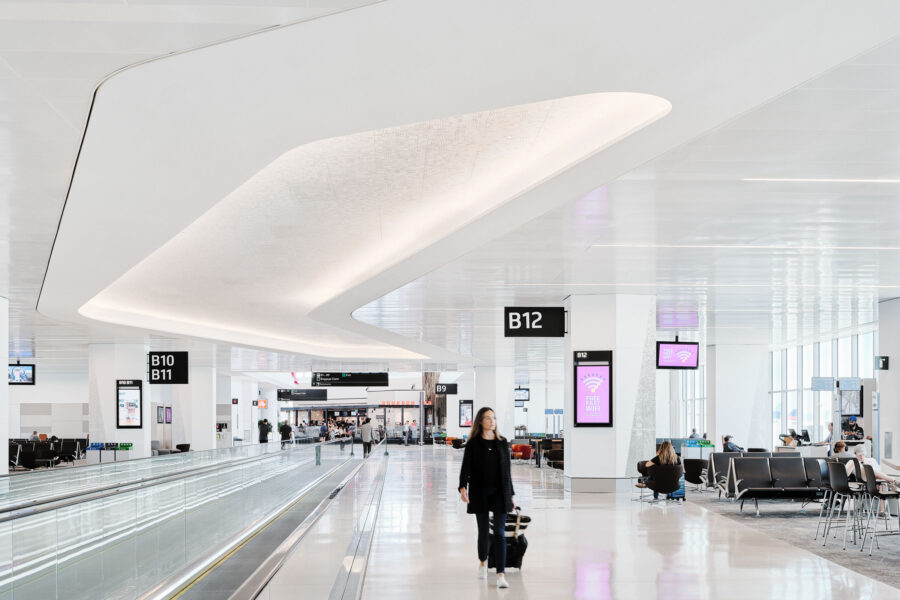
The HKS-designed San Francisco International Airport Terminal 1 project earned LEED Gold and WELL Platinum certification. Photo by Joe Fletcher
But then came the challenge of figuring out other ways to make the space align with WELL’s standards. Smith said one early challenge was figuring out who would be considered the “occupants” of the terminal. Travelers, airport employees, airline staff, people working in shops and restaurants, security personnel, and cleaning staff all used the space. But SFO could not control what benefits the airlines, restaurants, and shops offered to employees. And some hallmarks of WELL-informed design—like task lights at workstations—didn’t always make sense, either.
But then, in spring 2018, IWBI released its pilot program for WELL v2. This gave builders a little more flexibility, allowing them to earn extra points, many of which focused on air quality. And improving air quality, as it turns out, was already a cause of concern for SFO.
Smith says the airport had already conducted research and found the air outside the terminal contained a lot of pollutants, both from the city of San Francisco and the planes idling on the jetway.
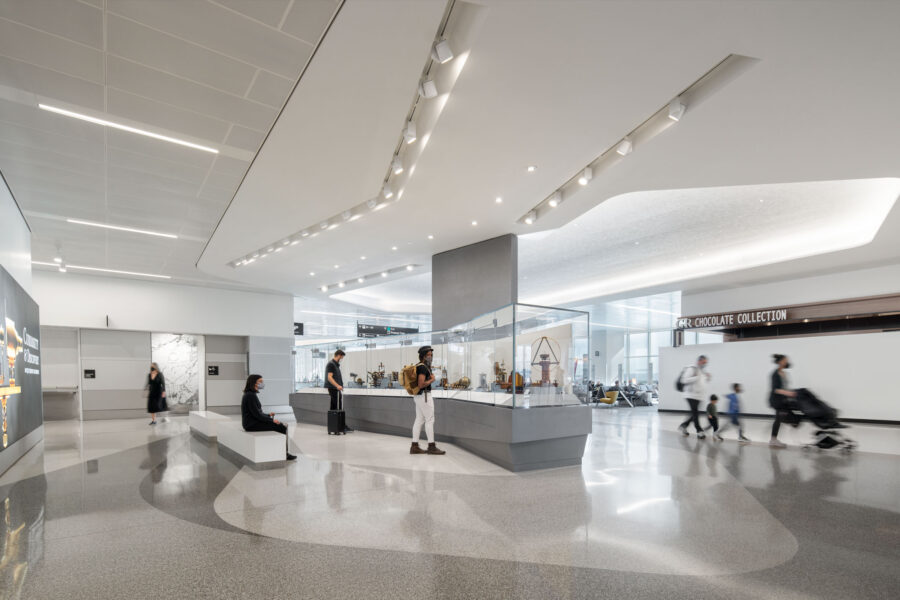
HKS paid special attention to material choices to ensure minimal to no off-gassing in the design of the airport project. Photo by Jason O’Rear
She worked with the build team to introduce displacement ventilation—bringing fresh air into the terminal near the floor at a low velocity that occupants can’t hear or feel. The air comes in low, then slowly drifts toward the ceiling, taking pollutants, smells—and viruses—with it. “It’s not swirling all around and potentially infecting people,” Smith says.
To complement this the designers also swapped out forced air heating and cooling for chilled beams and radiant heat to improve energy efficiency, air quality, and comfort.
These changes earned the project points toward its WELL certification—as did the use of large windows that reduce the need for electric lighting and help occupants keep a natural circadian rhythm. The windows also feature a special glaze that changes with the sun’s location to reduce glare.

Natural light and comfortable seating dominate the waiting areas inside SFO Harvey Milk Terminal 1. Photo by Joe Fletcher
Smith and her team cut down on sound pollution by using sound-dampening surfaces and quieter mechanical systems like walkways and escalators. SFO instituted a “quiet airport” program to cut down on PA announcements and music.
The project also earned points for material precaution and transparency. This included making considerations for the off-gassing of materials used in the space as well as policies for green cleaning procedures and the handling of hazardous waste like cleaning products and batteries.
Once the project was finished and all the points were tallied, Harvey Milk Terminal 1 earned WELL Platinum certification in October 2022. This is the highest level available under the WELL system, and it was the first airport terminal in the world to achieve that certification. Airport Director Ivar C. Satero thanked the project team for “setting the new standard for how airport facilities can truly benefit the people who use them.”
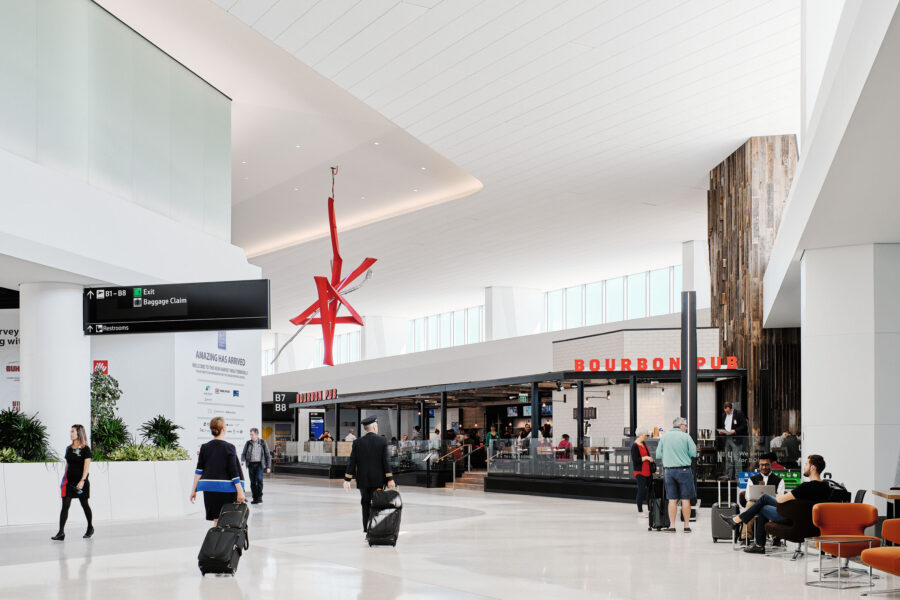
“It’s a lot of fun to work with a collaborator who also shares a passion for using sustainable materials,” says HKS’ Allison Smith. Photo by Joe Fletcher
Smith credits the design team and SFO for holding firm to their goals through the build process. “It didn’t just happen. It was very intentional to meet these types of requirements,” she says.
She is now working to shape the WELL system for other airport projects by serving on the IWBI’s airport advisory group, which launched in 2020. She says at the time she was the only member of that group actively working on an airport project, which helped the group think about how WELL principles apply to the unique challenges and uses of an airport terminal.
Another recent non-air-travel-related highlight of her career was working on the Walter P. Moore’s office building in Washington, DC. “It’s a lot of fun to work with a collaborator who also shares a passion for using sustainable materials,” she says. “It’s been a lot of fun on both sides, to explore a project in a different way.”

The SFO Terminal 1 project earned LEED points for material precaution and transparency. Photo by Jason O’Rear
That project earned LEED Gold, which was a thrill for Smith. “I’m on the US Green Building Council’s Materials and Research Technical Advisory Group, so being able to use the newest beta version of LEED is bit of a nerdy moment. To certify a project under that system was personally a lot of fun.”

